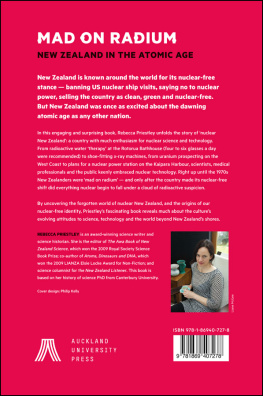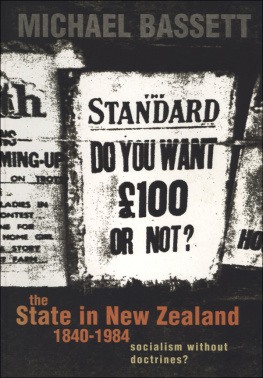Courtenay Latimer - Creeping Up on Auckland
Here you can read online Courtenay Latimer - Creeping Up on Auckland full text of the book (entire story) in english for free. Download pdf and epub, get meaning, cover and reviews about this ebook. year: 2005, publisher: Sheridan House, genre: Non-fiction. Description of the work, (preface) as well as reviews are available. Best literature library LitArk.com created for fans of good reading and offers a wide selection of genres:
Romance novel
Science fiction
Adventure
Detective
Science
History
Home and family
Prose
Art
Politics
Computer
Non-fiction
Religion
Business
Children
Humor
Choose a favorite category and find really read worthwhile books. Enjoy immersion in the world of imagination, feel the emotions of the characters or learn something new for yourself, make an fascinating discovery.

- Book:Creeping Up on Auckland
- Author:
- Publisher:Sheridan House
- Genre:
- Year:2005
- Rating:3 / 5
- Favourites:Add to favourites
- Your mark:
- 60
- 1
- 2
- 3
- 4
- 5
Creeping Up on Auckland: summary, description and annotation
We offer to read an annotation, description, summary or preface (depends on what the author of the book "Creeping Up on Auckland" wrote himself). If you haven't found the necessary information about the book — write in the comments, we will try to find it.
Creeping Up on Auckland — read online for free the complete book (whole text) full work
Below is the text of the book, divided by pages. System saving the place of the last page read, allows you to conveniently read the book "Creeping Up on Auckland" online for free, without having to search again every time where you left off. Put a bookmark, and you can go to the page where you finished reading at any time.
Font size:
Interval:
Bookmark:
C. A. Latimer was born in 1929 to a family of journalists on his fathers side and flour and biscuit manufacturers on his mothers, neither of which would explain his interest in all forms of ship and boat from rusty Thames lighters to huge ocean liners. This interest led to an education at the Nautical College, Pangbourne, where he failed eyesight tests for both Royal and Merchant navies. Conscripted into the army, he was fortunate to find himself in charge of unloading salt from Sunderland flying boats during the Berlin Airlift of 194849, with a team of stevedores from the Berlin docks and a fine fleet of tugs and pontoons to look after. After demob he worked in the family milling business, sailing frequently in Ivan Carrs exquisite Solway Maid, last-built of William Fife IIIs creations. He left to become a yacht broker with the East Coast Yacht Agency (subsequently Interyacht) in Woodbridge, Suffolk, before setting off in Aberdeen Anzac for New Zealand. On his way back he married his wife Sarah in Princeton, New Jersey, then settled in Woodbridge again, working at Interyacht until retirement. Solway Maid had rather spoilt him for other yachts, but he was able to transfer his affections to Aberdeen Anzac, recognising her splendid, if un-yachtlike, qualities.
T HE EVENTS leading up to our passage to New Zealand aboard the 70-foot Motor Fishing Vessel Aberdeen Anzac were various and complicated a game of snakes and ladders, forwards and backwards; a story of mistakes and delays. Our (that is, Les and I; more about Les later) original plan had been to sail to the Antipodes in the Brixham trawler Gratitude. She had been built by the Jackman Brothers of Brixham in 1907, and was not in good condition. She would never have got there and would probably have drowned us in the attempt. The guardian angel who, in retrospect, seems to have watched over the whole project from beginning to end evidently started work in the summer of 1957 when Gratitude, having had her rudder removed during her refit, was towed into the wall of the Wellington Dock at Dover and seriously damaged. Her bowsprit had not been housed, but stood out about fifteen feet beyond her stem-head. When she ran into the dock wall, this great battering ram of solid wood ran back, smashing into the metal water tank in front of the saloon coach roof and carrying it into the saloon, a mess of collapsed metal, depositing about fifty gallons of water onto the saloon table. We made a successful claim against the tug company, and temporarily shelved our plans. I went to live at Woodbridge in Suffolk to take up a job as a yacht broker, while Les stayed in Sandwich, near Dover, to sell the remains of Gratitude and find another boat. His partner, Pam, had trained as a chemist and was able to find a good job in the laboratory of the Pfizer factory nearby.
Nearly two years went by, and I would have been ready to abandon the project but Les, to his credit, never wavered in his ambition to take a small boat either to Australia or to New Zealand. He knew next to nothing about sailing, navigation or the sea in general, but he was Australian and I have observed that they are a people who are undaunted by their own ignorance and feel that, in spite of all evidence to the contrary, nothing is beyond them. In consequence, they often succeed where the more prudent will either fail or never start in the first place. It is an attractive trait, but it can get their associates into trouble. I had been alerted to Less ignorance when, with the chart spread on the cabin table, he had pointed to the land area and referred to the heights shown in such a way as to make it clear that he thought they were sea soundings. He wasnt joking. I decided that I would depend on my own limited knowledge for any navigational decisions. For my part, I had my full quota of foolish optimism and delusions of competence, but I had some experience of yachting on a 20-ton cutter in Scodand, and was a little more aware of the dangers of a long ocean passage in a badly prepared boat. I had not yet been thoroughly frightened and so had not reached the healthy outlook of He who has suffered Shipwracke fears to saile Upon the seas, though with a gentle gale (Robert Herrick). Les and I had messed about with Gratitude in the Channel, but we had been lucky, and although we had hit the hard sand of the Dutch coast a couple of serious thumps, nothing had happened to unnerve us.
* * * * *
In 1959 I was being hard worked as a yacht broker. I went down from time to time to see Les and Pam, and to assure him that if and when he found another boat, I was ready to put up my share of the cost and join him in another attempt. I couldnt play much part in the search, except insofar as I could send him details of any craft which came onto our books for sale which seemed suitable. Les found a small fishing-boat conversion which he bought as a speculation, a delightful 40-foot Scottish boat which we brought down from Whitby to the Southwick Canal near Brighton in the Easter of 1959, but she was immediately put up for sale she was too small for us. He sold her, eventually, at a profit, and put the money aside for the larger boat which he hoped to find. This presented itself in the form of the 70-foot Admiralty type Motor Fishing Vessel Whinnyfold. I sent Les the details, but he had already spotted her in a private advertisement. He bought her, and the first thing he did was to change her name to Aberdeen Anzac. Nobody regretted the disappearance of Whinnyfold. He and Pam then started the process of gathering together a crew. Apart from the three of us, we needed nine others, who were acquired by advertisement in the Observer. An enormous number of applicants was carefully sifted Pam wrote the letters and eventually, by the autumn of 1959, we had our full complement of 12. Each was asked to put in some cash to pay for the costs of fuel, food and the other inevitable expenses of a 12,000 mile passage. I scraped together what I could, which included my share of the sale of Gratitude (Les had sold her well, in spite of her sorry state), while Pam put in the largest share, having sold her cottage in Sandwich.
That summer of 1959 had been one of the driest and hottest in memory, and it was just starting to break up as I drove down to Southwick with our engineer, Dick, whose job it would be to look after Aberdeen Anzacs 160-horsepower Lister Blackstone diesel. Im not sure what his experience had been, but he seemed both confident and competent: a laconic 27-year-old. I was quite happy that he should rule in the engine room, not a place where I planned to spend much time. When we arrived at the Southwick Canal, most of the crew had already assembled, and we all had a meal together in the saloon of Boomerang, the small boat which Les had just sold. We sat around the table eating a large beef and rice dinner. Rice: that was a portent for the future. It has always struck me that it is entirely arbitrary, what one remembers and forgets. I remember that meal with complete clarity. It was the first time I had met my shipmates, and they were a very diverse group.
Tim, in his early forties, was our radio expert. He had been a radio officer in the RAF during the war, had served on airsea rescue powerboats, acquiring some nautical knowledge, and was also knowledgeable about the engine room. Keith, 27, who had signed on as an engineer, was a PhD from Sheffield University who had worked at Harwell, which had given him a slightly sinister mystique. He had put in a substantial sum towards the venture. George and Muriel, in their early forties, were a married couple, both schoolteachers, who were going to find jobs in New Zealand: George had been in the Navy for many years, and Muriel had trained as a nurse. Bill, also about 40, had been working with punch cards, and although I had dozens of conversations with him, coming to know him well, I never really found out what he did. I think he found it impossible to explain to me I was, as we would say now, too far behind. Nigel, 33, was an Australian who had been living and working in England and was now returning to his beloved Queensland. He had very recently married an English girl who was going out to Australia by more orthodox means. He had signed on as an electrician, and that he certainly was, but we also found that he was a first-rate carpenter as well, an accomplishment which was going to prove valuable in the coming months. Dave, 30, was a trawlerman, but he too had other skills which became apparent later. He looked the very model of a trawlerman, in his speckled sweater, cloth cap and extremely powerful frame. He inspired great confidence when seen about the deck, handling heavy warps as if they were pieces of string.
Font size:
Interval:
Bookmark:
Similar books «Creeping Up on Auckland»
Look at similar books to Creeping Up on Auckland. We have selected literature similar in name and meaning in the hope of providing readers with more options to find new, interesting, not yet read works.
Discussion, reviews of the book Creeping Up on Auckland and just readers' own opinions. Leave your comments, write what you think about the work, its meaning or the main characters. Specify what exactly you liked and what you didn't like, and why you think so.







